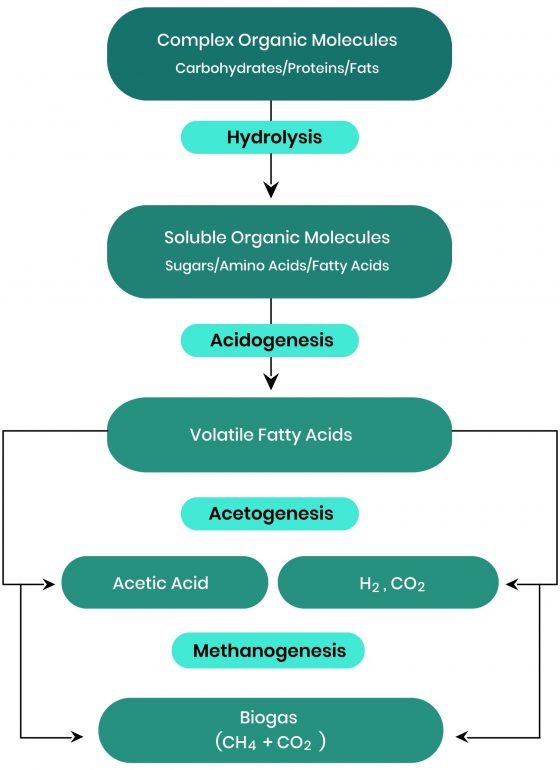Anaerobic Digestion
Ideal for treating high-strength wastewater and recovering energy.
Energy Recovery from Wastewater
High-strength wastewater with high organic compound concentrations, such as wastewater from food and beverage manufacturing, are very well-suited to waste-to-energy projects using anaerobic digestion. Anaerobic digestion can also be used to treat high organic content solid waste, such as food waste or animal manure waste. In anaerobic digesters organic compounds are removed under anaerobic conditions. Under these conditions, the ecosystem of organisms present in the treatment plant degrade organic matter without the presence of oxygen, and a byproduct of the metabolic reactions that take place is a high-energy gas called biogas. Biogasis comprised primarily of methane and carbon dioxide, and can be used to generate heat or electricity, or further processed and used as a transportation fuel or injected into a natural gas pipeline as renewable natural gas.
Given that anaerobic digestion is a net energy producer, it is more economical to treat high-strength wastewater in an anaerobic digester to reduce organic loads compared to using an aeration-based system where oxygen requirements (and the associated energy costs of delivering that oxygen) would be high. Once organic loads have been brought down in an anaerobic digester, then further treatment can always be conducted in an aeration-based treatment system to bring down the organic concentrations further. Circle H2O has experience building hundreds of anaerobic digester plants for a variety of wastewater and solid waste types, with a focus on wet-digesters (e.g., where the waste can be made into a pumpable slurry).
